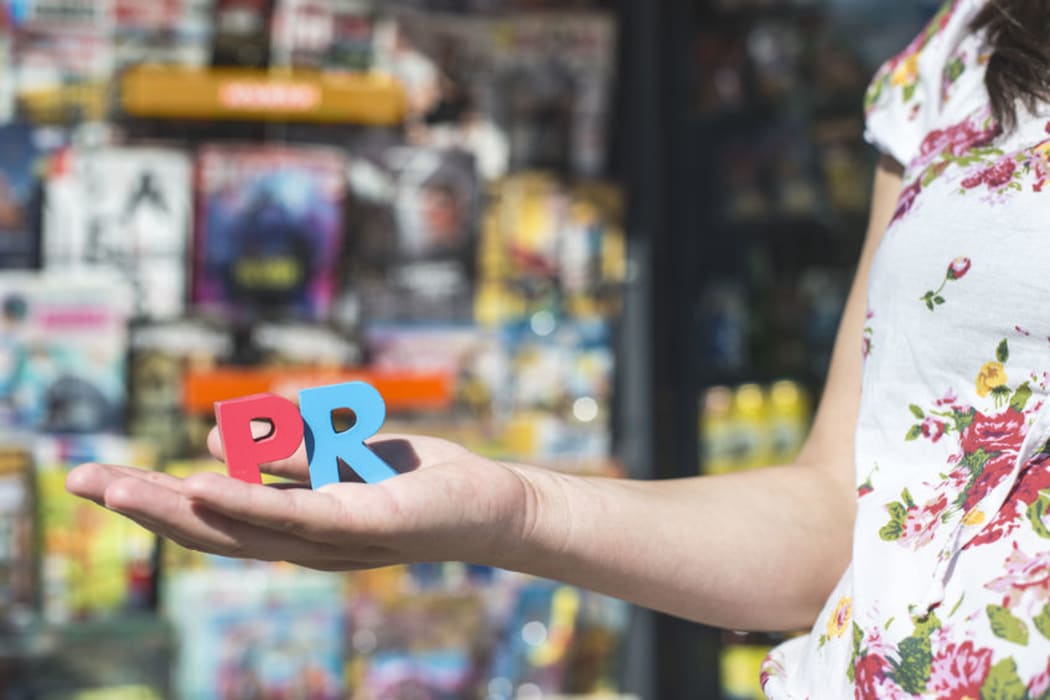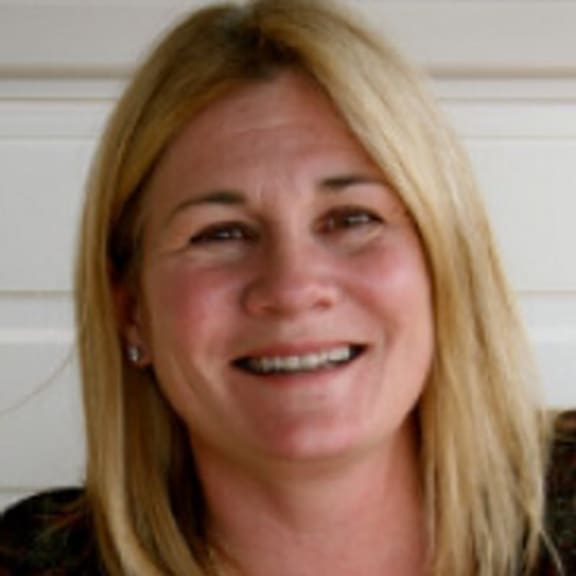What you see in the media is often the result of public relations people and journalists co-operating but you wouldn't usually know it. Mediawatch looks at a recent exception and asks an expert in public relations and journalism where the balance of power now lies.

How much power lies in the hands of PR practitioners? Photo: 123RF
There was a revealing portrait of the new group chief executive of ANZ in the business section of last weekend's New Zealand Herald. Shayne Elliot drove the Herald’s business editor, Liam Dann, out to the site of his humble Te Atatu beginnings. Along for the ride in the back, presumably keeping track of exactly what was going on the record, was a "corporate minder", Mr Dann said.
Another profile in the same paper's magazine posed this question last weekend: "Is this Auckland's most influential woman?"
It wasn’t Cabinet minister Judith Collins or anyone else in politics - it was PR company boss Deborah Pead.
PR power
Ms Pead is not exactly a household name across the country but she is in the media, especially in Auckland. And other influential people certainly know who she is. Indeed, influencing other people is her business at Pead Public Relations.
Even the writer of her Herald profile, Greg Bruce, acknowledged she'd influenced him:
"From the moment I first agreed to write about Deborah Pead, even before I spoke to her for the first time, I could feel her taking control of what I said about her. I didn't see any way to prevent it. I decided to not try."
And straight after that:
"She is friends with my closest colleague, my boss and my boss' boss. It's quite likely that she exerts at least some influence over everybody who might ever employ me. The significance of that fact should not be underestimated."
Mr Bruce went on to point out Ms Pead had arranged for him to talk to her own clients, so they could tell him things about her for his article - all very positive things, as it turned out.
AUT journalism curriculum leader Helen Sissons told Mr Bruce the relationship between PR and journalism, which she has studied, can be both symbiotic and parasitic.

Helen Sissons Photo: supplied
"Both of you have totally different jobs and you're both trying to do your jobs well, but you're not good for each other. It's the line between parasitic and symbiotic. Neither can do the job without the other but you both make each other a bit sick."
Mr Bruce wound up his article by listing freebies he'd been given by PR people recently, including fancy food and drink, tickets, books and videos, but said Ms Pead had initially offered him nothing during the course of writing his Herald article about her.
But later she got in touch to offer him a fancy suit made by a client company. For this, he would fly to Paris to interview the people behind the suit, talk to people who wear these suits and wear one himself.
He wound up his article like this: "The deadline for the story you are now reading was still a few days away."
It left readers to ponder the nature of the influence at play.
Stories appear in the media all the time because PR people have persuaded journalists and editors to cover them - but journalists hardly ever reveal how that influence plays out. Ms Pead was happy with what ended up in print last weekend if this message to the Herald on Twitter was anything to go by:
That bottle of Cristal 2005 I've been nursing is going to be popped. Cheers @NZHCanvas https://t.co/7YerDyhSnY pic.twitter.com/7RlDginw4r
— Deborah Pead (@DeborahPead) March 25, 2016
Who holds the power - PR or the media?
Ms Sissons is the author of Negotiating the News: Behind the curtain of the journalism-public relations relationship.
“Neither journalists nor PR [people] are usually open about their interdependence. Really it's not in their interest to admit they are so intertwined." she told Mediawatch.
“For PR, it's not in its interest to concede it continues to need journalism’s ability to reach that mass audience - or the third-party endorsement that comes with mentioning a client in what readers or listeners believe is independent editorial,” she said. "But journalism doesn't want to admit it needs help to fill its 'news hole' either.
"Here we see a sort of whistle-blowing from Greg Bruce. He's shown the process of how some of these stories come about," Ms Sissons said.
"This is becoming more common, especially in political journalism. There are more articles now critiquing that process or looking behind the meanings of what politicians or their spin doctors do.”
She said the Herald's Liam Dann noting that a “corporate minder” had accompanied the ANZ’s new boss in his interview with the paper was also an example of this.
“The aim seems to be to eradicate any possibility of off-the-cuff remarks or any statement that might be too colourful or controversial - and that nothing is said that is outside the bank’s general strategy," she said.
Some scholars in the media believe the media should more often show the pressure they come under, and be more transparent with their audience, she said.
"Make no mistake. The relationship is about the struggle between PR people on behalf of their clients and journalists for control of the news agenda and the content of each story."
For her research, Ms Sissons has examined cases studies of journalists dealing with PR people, even by recording the body language of both parties while they negotiate.
Journalists are very aware of the nature of the relationship, she said, and that there has been a shift in the balance of power.
She cited a lecture by James Harding, BBC Director of News and Current Affairs, in 2014: "For more than a decade now, money and jobs have been draining out of newsrooms. And, let's be clear, fewer journalists does not mean less news, it means more PR - more corporate puffery, more canny product placements, more unchecked spin."
Inducements are common, and sometimes appropriate - such as a concert ticket is exchange for a review - but rarely “as lavish” as the offer made to Greg Bruce.
She said Ms Pead had offered such an inducement before - offering a trip to New York to journalists and broadcasters in exchange for using a brand name on air. The campaign even claimed media coverage pointing out the conflict of interest created for journalists only added to its effectiveness, generating further free exposure for the brand.
“Journalists have to stay on good terms with PR people for access to information and sources - and they resent that," Ms Sissons said. "But I think many have got used to that now."

